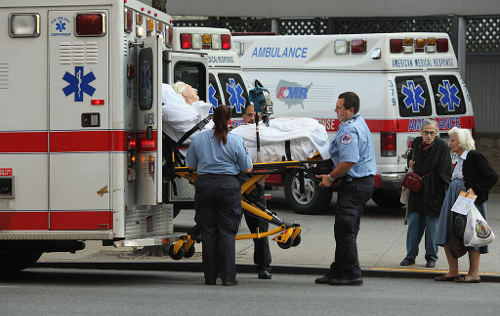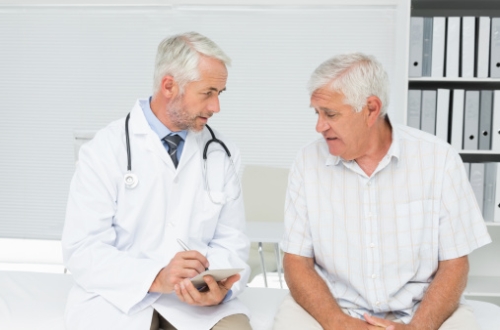 As the fifth leading cause of death and disability, a stroke claims a life every four minutes on average.
As the fifth leading cause of death and disability, a stroke claims a life every four minutes on average.
As unbelievable as that seems, the Centers for Disease Control and Prevention (CDC) cautions that nearly 800,000 Americans will suffer a stroke this year.
Would you know what to do? Listening to your body is key in knowing whether you are experiencing a stroke as response time is vital.
What Does a Stroke Feel Like?
Many strokes go without seeking immediate medical attention as the symptoms are usually not associated with pain, aside from a severe headache.
Depending on the person and their experience, first-hand accounts will vary from feeling calm and relaxed before the episode to feeling a bit of discomfort or pain in their arms or legs.
It is important to note stroke signs are usually sudden and severe when they do occur.
Major symptoms of a stroke:
- Blurred or loss of vision in one or both eyes
- Difficulty walking or with balance
- Trouble speaking clearly
- Muscles become weak or numb
- Trouble thinking or understanding
- Severe headache
The signs and symptoms of a stroke vary from person to person, but there are key factors to keep watch for. There is a universal acronym (F.A.S.T.) to remember if you or someone may be experiencing a stroke.
F – face drooping; ask the person to smile; is their smile uneven?
A – arm weakness; ask the person to raise both arms; does one arm not raise?
S – speech difficulty; ask the person to repeat a sentence; is their speech slurred?
T – time to call 911
What Happens to a Body During a Stroke?
Every heartbeat sends essential nutrients and oxygen to cells through our blood vessels. If there is a blockage within a blood vessel to our brain limiting the blood flow, we experience a stroke.

While the human body is a wonderful healing vessel at times, a stroke can have detrimental effects depending on the type. The two major types are hemorrhagic and ischemic. A hemorrhagic is caused by the rupture of a weak blood vessel in the brain.
This type leads to more deaths by strokes even though it is less common than that of an ischemic stroke. Time is critical to stop the brain from bleeding or swelling and surgery may be necessary.
The more common stroke, an ischemic stroke, is caused by a blocked blood vessel in the brain from a blood clot. Medication is given for treatment to dissolve the clot but must be administered within 4.5 hours from the onset of symptoms.
In relation to the ischemic stroke, a transient ischemic attack, or TIA, also occurs with a blood clot but the main difference is that it is treated by the body itself.
Known as a mini-stroke, a TIA clot dissolves on its own and the same symptoms of ischemic are gone within 24 hours. This is taken as a warning sign that a major stroke may be imminent.
The National Stroke Association has determined 30% of those suffering from a TIA experience an ischemic stroke within one year, usually falling within the range of a few days to a few weeks in between the attacks.
When to See a Doctor?
 Regardless of the type or severity of a stroke, it is vital to seek medical attention immediately if you suspect you are having a stroke.
Regardless of the type or severity of a stroke, it is vital to seek medical attention immediately if you suspect you are having a stroke.
The time factor is important as the American Stroke Association estimates 2 million brain cells die each minute your brain lacks blood supply from a clot.
Those cells perform a specific function in your body such as walking and talking and once those cells are gone, so are the affected mental and physical abilities.
This is evident as the CDC reports: “patients who arrive at the emergency room within three hours of their first symptoms tend to have less disability three months after a stroke than those who received delayed care.”
What to Expect After a Stroke?
Once a person has received immediate treatment for the stroke and is stabilized, the road to recovery may be long and stressful depending on the severity of the stroke and the response time.
It is important to treat the underlying causes that may have caused the stroke to prevent another one. Your team of medical staff will work with you and your loved ones to plan treatment options for your rehabilitation needs.
Whether you can return home to recover or be admitted to an in-patient rehabilitation center will entirely depend on your condition.
There are also many non-medical support systems available to help you mentally and emotionally face your recovery.
Time is of the essence, and while the signs of a stroke may mimic other medical conditions, it is best not to take any chances and seek help immediately.
While not reversible, a quick response can prevent further damage to major tissues. The next time you or someone you know seems to be experiencing odd behaviour, think F.A.S.T. and jump into action. It could save a life, possibly yours.
